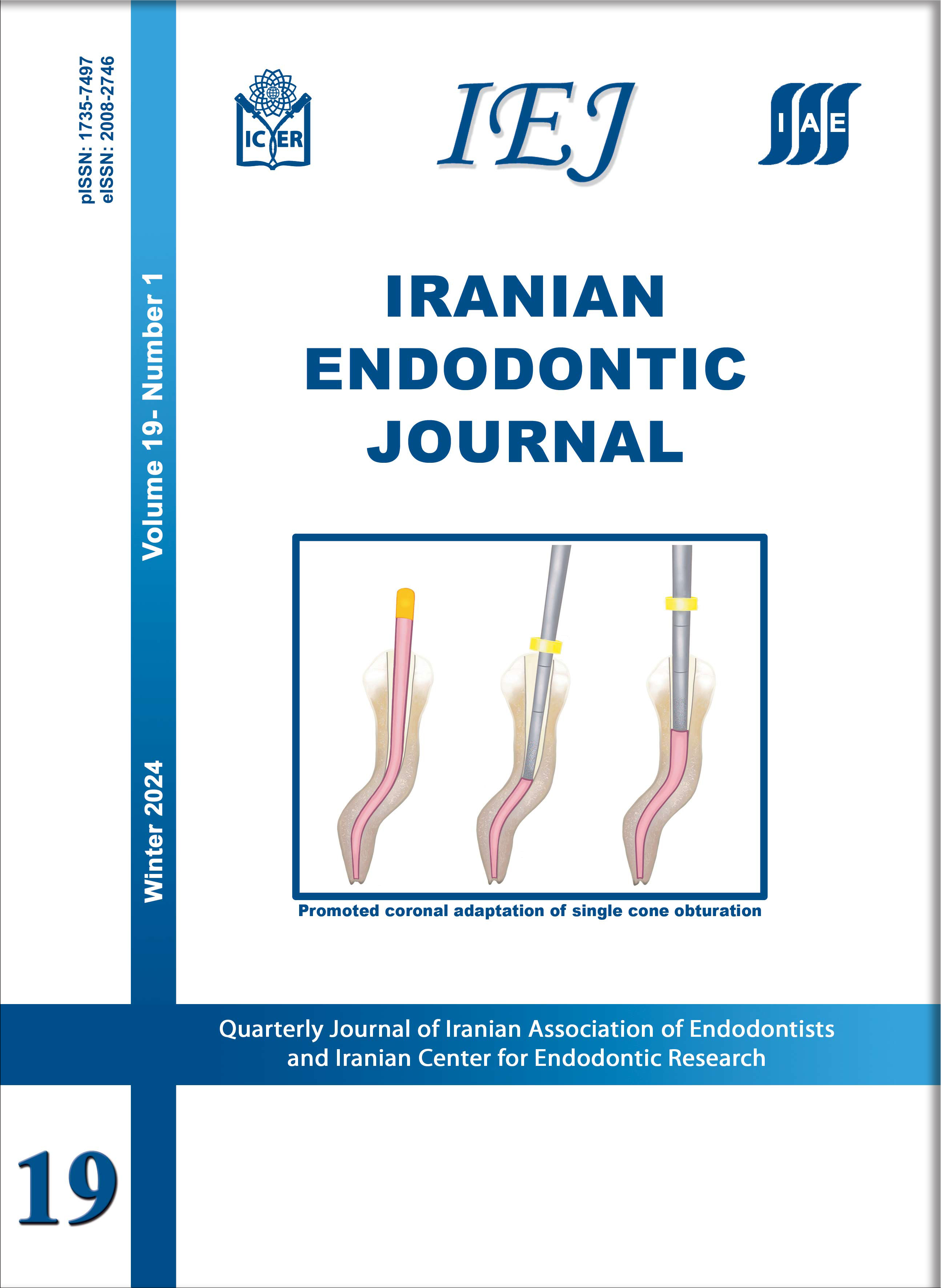An In Vitro SEM Study on the Effectiveness of Smear Layer Removal of Four Different Irrigations
Iranian Endodontic Journal,
Vol. 7 No. 4 (2012),
13 Mehr 2012,
Page 171-176
https://doi.org/10.22037/iej.v7i4.2802
Introduction The aim of this study was to compare the smear layer removal efficacies of 3% sodium hypochlorite (NaOCl), 17% Ethylenediaminetetraacetic acid (EDTA), SmearClear and BioPure MTAD using a common irrigation protocol.
Materials and Methods: Fifty freshly extracted human single rooted maxillary and mandibular teeth were prepared by a ProTaper rotary system up to an apical preparation file size F3. Prepared teeth were randomly divided into five groups (n=10); distilled water (Group A; negative control), EDTA (Group B), SmearClear (Group C), BioPure MTAD (Group D) and NaOCl (Group E). After final irrigation with tested irrigants the teeth were decoronated, split into two halves longitudinally and observed under a scanning electron microscope (SEM) for removal of the smear layer. The SEM images were then analyzed for the amount of smear layer present using a three score system. Data were analyzed using the Kruskal-Wallis test and Mann-Whitney U test.
Results: Intergroup comparison of groups B, C, and D showed no statistical significant differences in the coronal and middle thirds, however, in the apical third the canal surfaces were cleaner in samples from group D (P<0.05).
Conclusion: BioPure MTAD was the most effective agent for the purpose of smear layer removal in the apical third of the root canals.



